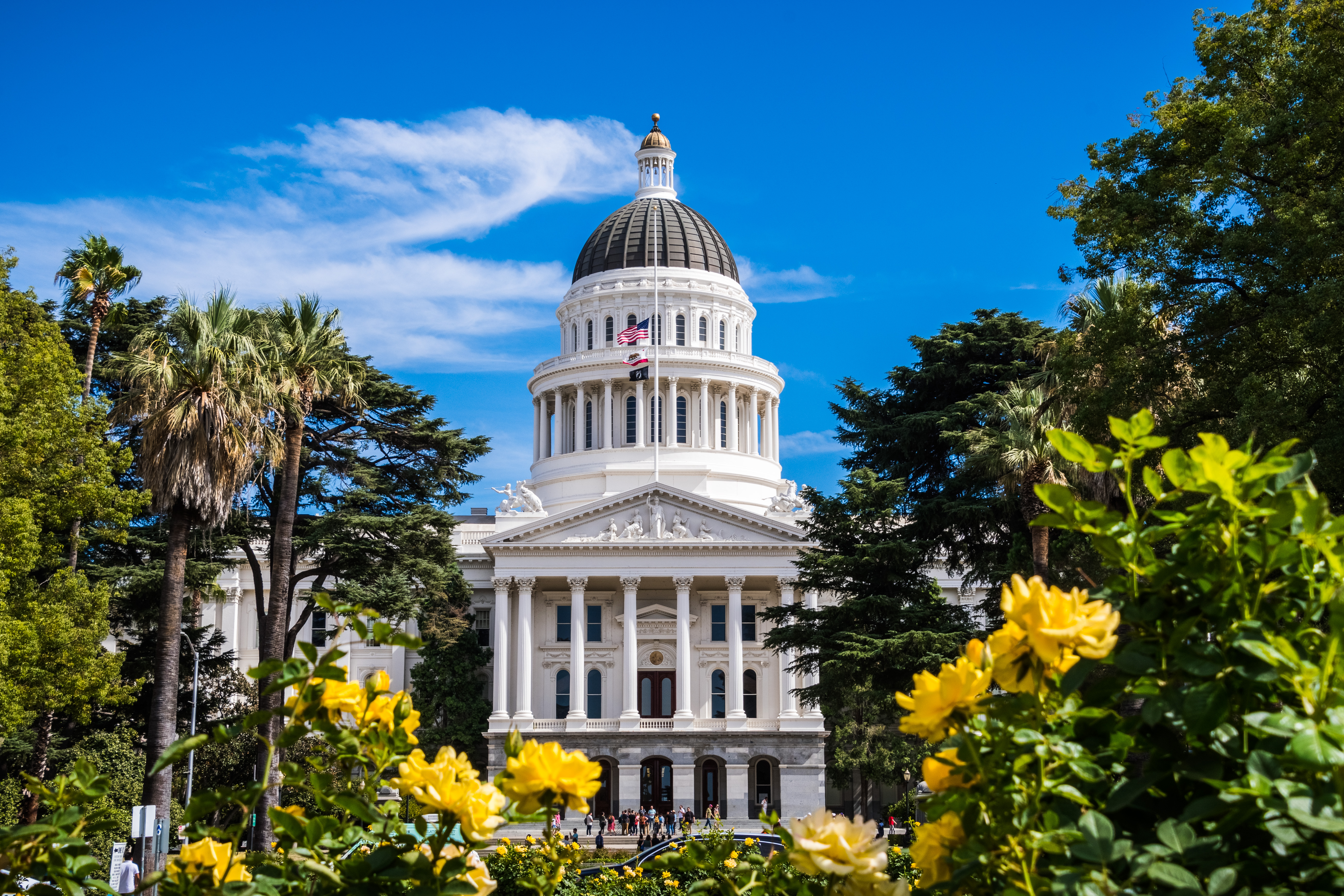The Association is building coalitions to protect and fight for more transit-dedicated Greenhouse Gas Reduction Fund resources as Cap-and-Trade reauthorization discussions heat up at the state capitol.
By Arianna Smith
Managing Editor
Transit California

With less than five years to go before the Cap-and-Trade program’s expiration in 2030, reauthorization discussions have begun amongst stakeholders, the Legislature, and the Newsom Administration.
The Association has a newly formed hub of expertise and leadership as transit agencies work to shape these discussions: the Cap-and-Trade Reauthorization Subcommittee. The Association established the Subcommittee due to the widespread expectation that Governor Newsom and the Legislature would seek to extend the Cap-and-Trade program beyond 2030 sometime during the current legislative session.
Subcommittee representation and responsibilities
In December 2024, the Executive Committee Chair established the new Subcommittee to guide the Association’s efforts to protect and expand Cap-and-Trade funding discussions, one of the highest priorities approved for the Association’s 2025 State Legislative Program. Over the last decade, the Association has consistently advocated for the Governor’s Administration and the Legislature to continue to honor its long-term funding commitment to public transit capital and operations from the Cap-and-Trade Program’s Greenhouse Gas Reduction Fund (GGRF). Today, as Cap-and-Trade discussions get underway, and with knowledge that these discussions will likely include a review of GGRF expenditures, the Association will work to ensure that transit receives ongoing GGRF expenditures equal or greater to this historic share.
Participants appointed to the subcommittee represent the diversity of Association member agencies. Member agencies represented include large, medium, and small operators who serve urban, suburban, and rural communities across California; operators of a range of transportation modalities; and diverse voices from within the Association.
The Executive Committee has tasked members of the Subcommittee with developing funding principles and policy priorities for Cap-and-Trade reauthorization, overseeing the Association's legislative advocacy and communications campaign on this effort, and reviewing and responding to legislative proposals for Cap-and-Trade reauthorization. Members will also provide regular reports to the Association's Executive Committee and State Legislative Committee and work to ensure consensus and consistent messaging amongst California’s transit industry throughout reauthorization discussions.
Current Subcommittee efforts
The Subcommittee identified the Association's funding principles for Cap-and-Trade reauthorization and submitted a letter to communicate these principles to Governor Newsom and Legislative leadership in December 2024.
In the letter, Executive Director Michael Pimentel described why California’s communities benefit from ongoing support to transit from Cap-and-Trade funds: “I wish to offer the following overarching observation: the Greenhouse Gas Reduction Fund (GGRF)-supported transit programs established under SB 862 . . . are critical to the future of public transit in our state and foundational to the state’s efforts to address the single largest greenhouse gas (GHG) emissions contributing sector and meet California’s GHG reduction targets beyond 2030. These programs have facilitated the delivery of transformative transit projects and services statewide that substantially reduce GHG emissions, leverage significant federal funds to maximize the benefits of state investment, and deliver a myriad of co-benefits to local communities, including air quality improvements and jobs (in manufacturing, construction, maintenance, and operations).”
In laying out the Association’s Cap-and-Trade principles, the Subcommittee put forth three guiding recommendations for consideration by the Governor’s Administration and the Legislature. First, the Association urged protection of existing levels of GGRF funding for transit capital and operations established under SB 862. Second, it recommended, beyond this protection of funds, an increase for transit capital and operations, and that new transit capital funding be made available to support agency transitions to zero-emission vehicles and associated infrastructure. Finally, it recommended that the Administration and Legislature allow local and regional rail and transit systems to use certain GGRF funds currently set aside for the high-speed rail (HSR) project for future transportation hubs and projects that will directly connect to HSR.
Coordination with additional stakeholders
With guidance from the Subcommittee, the Association’s Executive Committee and advocacy staff will serve as an important voice in a large coalition-building effort beginning in 2025.
The Association has agreed to serve as a formal member in a coalition of Cap-and-Trade stakeholders that is being managed by the California Alliance for Jobs (CAJ). CAJ is a unique union-management partnership between over 2,000 heavy construction companies and over 100,000 unionized construction workers in California which originally formed part of a coalition to pass the Road Repair and Accountability Act (SB 1) in 2017. The coalition will also include local government interests, labor organizations, relevant trade associations, environmental advocates, and business groups.
“Over the next several months, the work for the coalition is going to be refining priorities into actual programs. We’re going to ask, what programs do we support, and are there changes we want to make to those programs?” said Matt Robinson, Legislative Advocate for the Association. He added, “And obviously, we’re trying to grow that funding for whatever programs we agree are the way forward.”
The coalition will work together to develop and present to the Legislature and Governor’s Administration a unified slate of Cap-and-Trade priorities, and coalition members will advocate for these priorities during state budget negotiations and possibly through additional legislation.
The bottom line
The Association’s membership has long been engaged in one of the most critical components to helping the Cap-and-Trade policy succeed at reducing climate-change causing greenhouse gas emissions: providing large-scale low -and zero-emissions transportation options for Californians.
“When it comes to emissions in California, the transportation sector shoulders a lot of the blame – and therefore it has a lot of the responsibility to lower those emissions,” said Robinson. “Electric vehicles alone won’t get us to meet our state reduction targets, so we need to provide alternatives for people to get out of their cars. We really need serious and sustained investments in public transportation if we’re going to have a shot at meeting those emission goals.”